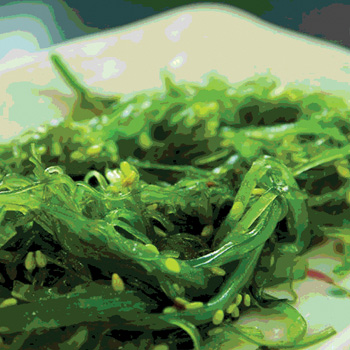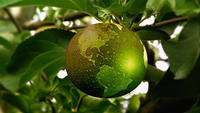Safety Is a Cornerstone of Ingredient Sustainability

With a world population of more than 7 billion people and growing, it is essential that those involved in all aspects of food production strive to produce goods more efficiently and in a more environmentally and socially responsible manner.
Food manufacturers are working to increase the sustainability of their global footprint while at the same time making their products safer from farm to plate.
Suppliers and manufacturers are accomplishing this by upgrading existing operations and consistently evaluating the safety and sustainability of their products and processes, ensuring a more environmentally responsible supply chain from beginning to end. As producers have increased efforts to become greater stewards of the environment, so too have consumers become more invested in the sources, safety and impact of the goods they buy.
According to a Nielsen study:
“Fifty-five percent of global online consumers across 60 countries say they are willing to pay more for products and services provided by companies that are committed to positive social and environmental impact. The propensity to buy socially responsible brands is strongest in Asia-Pacific (64%), Latin America (63%) and Middle East/Africa (63%). The numbers for North America and Europe are 42 and 40 percent, respectively.”[1]
Consumer scrutiny is felt acutely by food and beverage manufacturers in the demand for transparency and products offering more natural or certified organic ingredients, foods that consumers feel are more sustainably produced. According to the Organic Trade Association, over the last decade, sales of organic foods have grown 22 percent a year.[2] Suppliers and manufacturers are adapting to meet these demands while at the same time continuing to deliver nutritious food that tastes good.
Underpinning the consumer’s ability to make values-based choices and the ability of manufacturers and suppliers to respond in kind is the knowledge that safety must come before everything. When talking about our food system, we can’t lose sight of the fundamental goal: feeding people safely and nutritiously. We cannot think of the safety of products in isolation; rather, we must consider human impact equally along the supply chain from farmer through the end consumer. If an ingredient is not safe—safe to both produce and consume—then its organic label claim or sustainability profile carry little weight. In this way, safety is the cornerstone of sustainability. Safe practices inform sustainability and make the goal of improving our collective global footprint possible.
Sustainability
Our understanding of sustainability comprises five components: safe, ethical and responsible practices; respect for others and empowerment of talent; commitment to improving the quality of life in communities where we operate; effective and responsible use of resources; and continuous innovation to improve our efforts.
These principles guide business in a way that allows for the achievement of goals that make the world a better place today, tomorrow and in the future. With all these factors at play, there is no single definition of what makes a food product or ingredient sustainable, but rather, many considerations must be taken into account:
- What is the ingredient source? Is it renewable?
- How is raw material harvested? Is the practice safe and can it be made more so?
- What impact does its farming have on the local ecology? What impact does it have on those who farm it?
- How is the raw material made into the final ingredient? What does the process entail? Is the process safe and can it be made more so?
- How is the ingredient used in products? To what benefit? What body of evidence do we have that supports the ingredient’s safe use in food?
- What is the profile of finished products? What are their benefits?
- Does this ingredient pose a safety risk at any point in the supply chain?
As we consider particular ingredients, we must tackle these questions, asking ourselves where there are opportunities for improvement and how any negative impacts can be mitigated. We’re seeing with greater clarity that if an ingredient is not sustainable to harvest, sustainable to use and, most importantly, safe every step of the way, then it must be brought in line or it won’t remain a viable option for manufacturers for long.
Carrageenan
The ingredient carrageenan offers a good example of sustainability principles in action. Carrageenan is derived from red seaweed and is used to thicken and stabilize many foods and beverages. Other products that offer similar benefits include synthetic soluble fibers or gelatin derived from animals. Carrageenan offers a renewable, plant-based alternative. Other such naturally sourced, renewable ingredients include cellulose gel, sourced from sustainable forests, and alginates, derived from brown seaweed.
Carrageenan has been used in home kitchens in coastal regions for hundreds of years, but its commercial use in the United States began around World War II. Around this time, Krim-Ko, a Chicago-based dairy company, began using it in their bottled chocolate milk to prevent sedimentation.
Seaweed from the New England coast was the original source of carrageenan in the U.S., where it was harvested by hand and processed in local facilities. However, as its commercial use has grown, the sources for carrageenan have diversified and the harvesting process has expanded and improved. Today, commercial seaweed farming is generally considered to be one of the most environmentally friendly types of aquaculture. It promotes biodiversity without impacting seascape and requires no arable land or fresh water. More formalized techniques for farming tropical seaweed were developed in the 1960s, making seaweed farming a viable option for seaside communities across the globe. It is both environmentally and economically sustainable. Most tropical seaweed, more than 210,000 metric tons every year, is farmed in the Philippines, Indonesia and East Africa by family-owned farms that play an important role in sustaining their coastal communities. Using established practices, farmers can safely harvest considerably more seaweed over consistent and predictable periods and create a reliable, steady income for their families.
Once harvested, seaweed is processed to yield carrageenan with minimal waste. It produces some biosolids, which, rather than going to a landfill, can be used for practical applications including composting material, organic fertilizers, soil conditioning or “land farming” and cattle feed supplements.
By finding environmentally friendly uses for carrageenan byproducts, the production of this ingredient becomes increasingly sustainable, but there are more opportunities to accomplish this goal. It’s important to also evaluate operations for other opportunities to innovate. For example, FMC has successfully converted the energy source of our carrageenan production plant in Rockland, ME, from No. 6 fuel oil to clean-burning, environmentally friendly natural gas, helping the facility significantly lower emissions while increasing efficiency and producing a consistent final product.
Finished carrageenan is used in a variety of foods and beverages, including ice cream, other dairy products, enriched beverages and other packaged goods. Significant research attests to the safety of carrageenan in food—overwhelming evidence from dietary studies conducted over the past 40 years has demonstrated that carrageenan is a safe and suitable food additive.
Regulatory authorities in every region of the world from the United States to Europe to Japan have found carrageenan safe for use in food. This includes a July 2014 review by the Joint Food and Agriculture Organization/World Health Organization Expert Committee on Food Additives, which “concluded that the use of carrageenan in infant formula and formulae for special medical purposes for infants up to concentrations of 1,000 mg/L is not of concern.”[3] This decision was informed by the results of a new safety study published in spring 2015 and the results from numerous dietary studies that replicate the way humans ingest carrageenan. Continued study of the safety of carrageenan reaffirms that its use in foods is safe for consumers.
Carrageenan is often used as a thickening agent and its broad functionality enables the reduction of salt, sugar and fat without diminishing taste in a range of foods and beverages. Moreover, carrageenan preserves texture, structure and stability, which extends shelf-life efficiency and expands protein availability. Carrageenan is often used in aseptically packaged products that don’t require refrigeration during transportation or while on store shelves, reducing energy usage and making them safe for consumption in regions that lack a refrigerated supply chain. These benefits mean that food producers can reliably and safely make their products more available to people all over the world with greater efficiency and less waste. Carrageenan and ingredients like it are essential to meeting the global demand for safe, nutritious food and providing enough of it to feed a hungry world.
Natural Colors
Natural colors are also rising in popularity as consumer demand for cleaner labels continues to grow. Natural pigments can be sustainably extracted from plants, fruits and vegetables and come from a variety of sources, including paprika, saffron, lycopene from tomatoes, beta carotene from carrots and chlorophyll found in plants, to replace artificial counterparts. Like carrageenan, natural colors have their origins long in the past—Egyptians are said to have enhanced the appearance of candy using natural extracts as early as 1500 BC. Scientific data support the safety of the modern use of naturally derived coloring sources in foods and beverages.
When making the transition from artificial ingredients to safe and sustainable natural formulations, it’s important to understand that variability is inevitable, and it becomes the responsibility of the supplier to employ strategies that minimize irregularity and inconsistency of ingredients. The goal of manufacturing is to deliver consistent, reliable food products to consumers that align with their expectations of product quality. Nature is not able to provide homogeneous raw materials without variance, so suppliers must develop a global network of resources capable of minimizing irregularity and delivering ingredients with unwavering quality. Diverse sourcing also promotes the integrity and sustainability of the supply.
Areas of Opportunity
Technology and globalization have opened up tremendous avenues of growth for manufacturers and suppliers and have helped make feeding the world population possible. We have to continue to use them to motivate improvement of our processes and safety initiatives. Moreover, we need to work in partnership to provide greater transparency and assurance for consumers. All involved parties—farmers, suppliers, manufacturers, consumers—are responsible for maintaining the safety and improving the sustainability of our food chain.
Working together can help each partner improve processes. For example, manufacturers require data and support to demonstrate their sustainability commitments to their consumers. Suppliers must find ways to help manufacturers meet and exceed these goals. At the same time, suppliers must evaluate their own partners to establish ethical business practices—third-party organizations and certifications are useful in this pursuit. In many cases, implementing and executing assessment programs that verify environmental, health, safety, labor and other aspects of business can improve sustainability and safety. Reevaluating, auditing and upgrading existing operations, like switching from fuel oil to compressed natural gas, reduces environmental impact. Even smaller-scale projects, like installing more efficient equipment, improving insulation or adding programmable controls, can greatly improve the energy profile of operations. These types of improvements also increase the safety of work environments for the people involved in the process. Together, through changes large and small, manufacturers and suppliers can raise the level of safety, sustainability and transparency to the end customer.
While improving production processes ensures a safe, healthy end product is developed and delivered, conscientious businesses must also employ the most up-to-date research and science in support of food safety. As always, the safety of food products is the most important priority, and manufacturers and suppliers must evaluate their products to exacting scientific standards and best practices. Ingredients must be backed by a body of scientific research that demonstrates their safety, and that research must be made transparent to consumers. Too often, consumers are misled by conflicting and confusing information in the marketplace, and safe products are unnecessarily being taken off shelves as a result. A continued commitment to sound science and greater, more effective communication among manufacturers, suppliers and consumers can help prevent this outcome and instill confidence in the safety of food and beverage products.
Customers depend on manufacturers and suppliers to provide safe, healthy and affordable foods and beverages. This goal is achieved only through the commitment to safety and the relentless pursuit of sustainability. Sustainability leadership requires continued focus and integration of sustainability principles into innovation, operations and business practices. Embracing the opportunities available to us will benefit current and future generations. It’s the only way we can continue to feed the world’s growing population.
Michael R. Sestrick, Ph.D., has been with FMC Health and Nutrition as the global director of technology since December 2007.
Looking for a reprint of this article?
From high-res PDFs to custom plaques, order your copy today!






